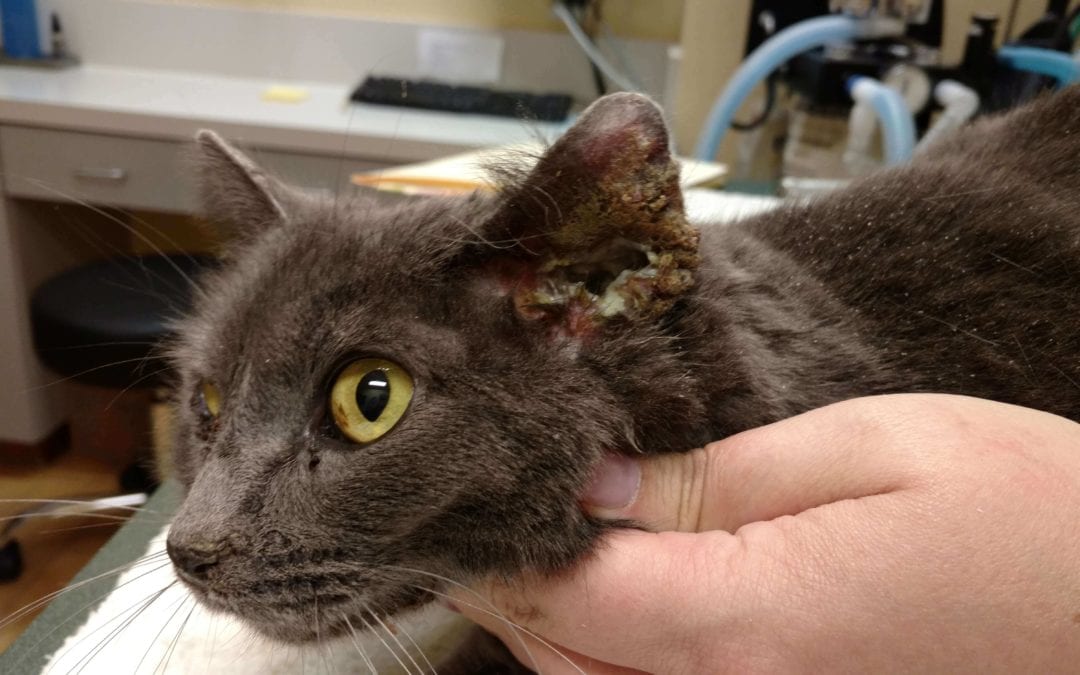Feline otitis is a tough topic to cover, but it’s necessary to talk about so that we can properly serve our feline patients when they present with an ear infection.
Dr. Ali Diesel and I sat down to dive into the muddy waters of feline otitis, and our conversation revealed some helpful tools to apply when dealing with these cases.
Here are some of our discussion points. For further explanation on each, listen to episode 54 of The Derm Vet Podcast!
Why is there infection to begin with?
Sometimes you’ll see a feline patient with excessive debris or wax, and mites have been ruled out. The debris just won’t seem to go away or is recurring. In these types of cases, it’s important to remember that infection is there for a reason– what is the underlying cause of this infection? Is there a common denominator between something else and the occurrence of infection or waxy buildup? For these patients, an allergy workup and management plan may need to be considered.
What about flushing for cats?
It’s no secret that our feline patients might be less tolerant of ear flushing, whether it’s being done in the clinic or at home. So, what can we do? As with most things, we have to take it on a case-by-case basis and assess what the patient might be willing to tolerate as well as what the owner is comfortable doing. If the owner is going to be doing flushes at home, be sure to show them exactly how to do so while in the clinic, so they feel confident in their abilities.
Ear flushing in cats is also going to be dependent on the veterinarian’s comfort level. Cats are more susceptible to adverse effects if the tympanum ruptures. There are alternate ways of cleaning out the ear, such as dipping a cotton ball into solution, letting that sit in the ear for a moment while massaging the canal, and allowing the solution to work its way down to where it needs to go. Whichever way it’s done, be mindful of the risks involved coupled with the tolerance level of the cat!
What topical medications can be used for cats?
This is a really tough question because there are not many topical medications that are specifically labeled for cats. You may have to use something off-label to treat the problem. Steroid drops can help to address some inflammation associated with feline otitis. In difficult cases, you may have to work with a compounding pharmacy to achieve what you need to while being safe.
Systemic vs. Topical treatments: Which do we find we use more often?
Dr. Diesel and I both agreed that we tend to use topical much more often. There are few cases where we approach feline otitis with systemic treatment. It’s just not necessary as often in feline patients. With that being said, as always, IT DEPENDS! There will be times when systemic treatment is the best course of action.
Feline otitis is a tricky topic, but we did our best to cover as much great information as we could in one podcast episode! Listen in to episode 54 of The Derm Vet Podcast, and make sure to contact me with more questions about feline otitis. What would be helpful for you in future episodes?


